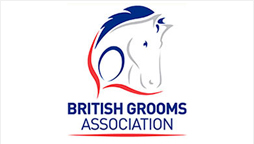Clean sport best practice
In order for horses to compete in BEFAR & FEI events, they must be free from prohibited substances. There are a number of effective ways to minimise and mitigate the possibility of contamination that could lead to a positive equine anti-doping test result.
HAY, FEED AND SUPPLEMENTS
- Use a reputable supplier – ensure hay, feed and supplements are obtained from a trusted source and have been correctly stored prior to purchase.
- Use high quality feed that has undergone Naturally Occurring Prohibited Substances (NOPS) testing – this should guarantee that feed is free from commonly known contaminants such as caffeine, theobromine, theophylline, morphine, hyoscine, hordenine and atropine. Check the British Equestrian Trade Association website to see if your feed manufacturer is listed.
- Keep samples of hay, feed, supplements and any corresponding batch numbers – this enables a thorough investigation to be carried out should contamination be suspected.
- Store feed carefully – prohibited substances could easily be dropped or spilt into open feed bags or storage containers.
- Make sure feed storage containers are clean – old feed becomes mouldy quickly. Certain types of mould can result in the production of naturally occurring prohibited substances.
- Supplements – some supplements contain more substances than the ingredients list and some have been linked to contamination. The FEI provides a warning regarding the use of supplements and supplement use must be recorded in the horse’s FEI Medication Logbook.
THE HORSE’S ENVIRONMENT
- Check for environmental contaminants – fields and/or surrounding land may contain plants that could lead to positive test, such as poppies, crocuses, nightshade and lupins.
- Don’t allow your horse to drink from your coffee/tea cup – there's a risk of contamination from caffeine, paraxanthine, theobromine and theophylline.
- Clean stables thoroughly between horses – never put a horse into a stable that isn't clean, especially when travelling or at an event.
- Rest paddocks between horses – paddocks that have been used by horses during a course of treatment must not be used for several days after treatment has ended. Make sure to remove all droppings from the paddock, too.
- Only use feed troughs or bowls that can be properly cleaned – it's not advisable to feed horses from stable fittings such as troughs and bowls, which are difficult to clean. Treatment or feed residues may remain and moulds may form, which could result in contamination.
- Ensure washing off areas are clean – traces of liniments and shampoos can easily be found in washing off areas and some may contain caffeine.
- Contamination from yard personnel and other animals – if you're using any medication yourself, washing your hands before handling horses is vital because topical treatments and traces of medication resulting from the handling of tablets may remain on your hands. There have also been cases of horses testing positive for human drugs after stable staff who have been taking medication or recreational drugs have urinated in their stables. Dogs and cats that may be receiving medication must not be allowed into horses’ stables.
MEDICATING HORSES
- Store medication carefully – ensure medication is marked with the name of the horse that it is intended for. Medication packaging must be sealed shut to prevent accidental spillage while in storage and kept in a locked cupboard.
- Take care when opening medication packaging – open medication packages with care because spillages may occur. Powdered medication can produce clouds of powder, so mix with small amounts of wet feed to reduce the risk of contamination. Gel, paste or liquid formulations, if available, are recommended. Always add and mix the medication into the feed of the treated horse in a separate area away from feed preparation for other horses.
- Use separate feed bucket for administering in-feed medication – despite thorough washing, traces of medication may remain in feed buckets. It's therefore strongly advised that separate, clearly labelled feed buckets are used to give horses in-feed medication. Feed stirrers that may be used to mix medication with feed must also be kept separately and clearly labelled for this use only.
- Dedicate one person to medication administration – this helps to reduce the risk of a horse receiving a double dose of medication, which could lead to the medication remaining in the horse’s body for prolonged periods of time and therefore result in a positive.
- Medicate the horse in a location that can be easily cleaned – it may be difficult to clean stables thoroughly, particularly when using medication in powder or paste formulations. It may be necessary to medicate horses in alternative locations, such as washing off areas.
- Use disposable bandage materials – following the application of topical medication, the treated area may need to be bandaged. It's strongly advised that disposable bandages are used for this purpose and that they're disposed of safely immediately after removal.
- Wear gloves when giving horses topical medication – this applies to cream and ointments, and certain types of oral medication such as sedative gels and anti-inflammatory pastes.
- Wash your hands thoroughly – thoroughly wash your hands with warm water and soap after handling human or veterinary medication, including tablets and liquids, and before working with your own or any other horse, even if you were wearing gloves. Other hand sanitising methods which are used for biosecurity purposes will not remove medication residue effectively.
- Dispose of empty medication packaging and unused medication correctly – empty bottles or pots of medication must be correctly disposed of and not re-used. Residues of medication will remain in the bottle despite attempts at thorough cleaning. Unused medication must be disposed of properly and your veterinarian will be able to advise you accordingly.
- Always inform your vet when you are next hoping to compete – your vet may be able to administer your horse with a medication that has a shorter detection time.
- Understand the difference between a detection time and withdrawal time – check the equine anti-doping page on our website for more information.


